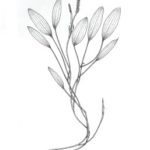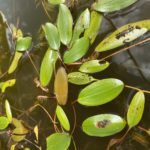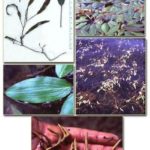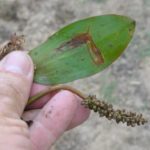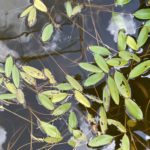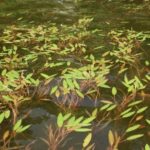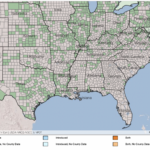USDA, NRCS. 2018. The PLANTS Database (http://plants.usda.gov, 28 March 2018). National Plant Data Team, Greensboro, NC 27401-4901 USA.
Illustration courtesy of University of Florida/IFAS Center for Aquatic and Invasive Plants. Used with permission.
What is American Pondweed?
Physical Characteristics
Leaves:
Submersed Leaves:
- Thin
- Oval-shaped
- 8 inches long
- 1.38 inches wide
Floating leaves:
- Leather-like texture
- Long leaf stalks
- Elliptical-shaped
- Somewhat rounded at base
- 4.3 inches long
- 1.75 inches wide
Flower:
- Receptacle usually wider than stem
- Immobile
- Greenish-brown in color
- Oval- or elliptical- shaped
Stems:
- Rhizome white & spotted with rusty red
- Simple
- Often flat
- 0.05 – 0.08 inches in diameter
Roots:
- Branch from rhizome
Where Does it Grow?
American pondweed can be found in streams and lakes.
Pros and Cons of American Pondweed
American pondweed is highly utilized as food by ducks and some other types of wildlife. Submerged portions of all aquatic plants provide habitats for many micro and macro invertebrates. These invertebrates in turn are used as food by fish and other wildlife species (e.g. amphibians, reptiles, ducks, etc.). After aquatic plants die, their decomposition by bacteria and fungi provides food (called “detritus”) or many aquatic invertebrates.
